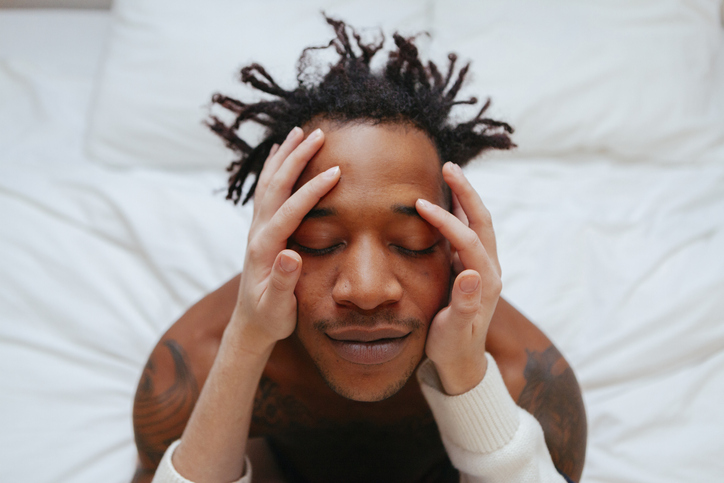
For individuals suffering from a condition that affects their sexual function, receiving an accurate diagnosis is an important first step in the process of pursuing treatment. This may seem simple, but unfortunately, many sexual disorders have overlapping symptoms and manifest themselves in similar ways, sometimes making it difficult to identify the root of the problem. Stuttering priapism (SP) and sleep-related painful erection (SRPE) are two rare disorders that have similar symptoms and can cause painful erections at night, but they are distinct conditions that should be managed and treated in different ways.
A team of researchers including David Ralph, MS, FRCS, explored the similarities and differences between SP and SRPE with the aim of determining the most effective medical and surgical treatments for men with either condition. Dr. Ralph, an accomplished urologist and microsurgeon who has done extensive research on several sexual medicine topics, including Peyronie’s disease and erectile dysfunction (ED), said: “[This study] is important because it differentiates between the different types of painful nocturnal erections. The mechanisms [of these disorders] may be different and the treatment is different also.”
Priapism is a prolonged, often painful erection that is not related to sexual stimulation and can last for hours. It is an uncommon condition, but it occurs more frequently in people with sickle cell disease (SCD), an inherited disorder in which red blood cells become hard and sticky and take the form of a C-shaped “sickle.” SP is a type of ischemic “low-flow” priapism (IP), caused by blood not being able to properly flow back out of the penis. Men with SP experience recurrent, painful, prolonged erections with occasional episodes of IP (erections lasting more than four hours). While SP erections could happen at any time, they usually occur at night when men are asleep. Like other forms of priapism, SP can cause fibrosis and may result in erectile dysfunction.
SRPE is a condition in which men experience painful erections during REM sleep but have normal, painless erections when they are awake. The cause of SRPE is unclear, but some early research suggests it may be associated with stress and anxiety. Unlike SP patients, men with SRPE do not have IP episodes, and the disorder does not affect sexual function nor lead to ED.
Given the similar presentation of the two disorders, it can be challenging to determine which condition a man is afflicted with, which is problematic because the conditions require different treatment approaches. “SRPE is often treated as SP,” Dr. Ralph explained, “but it may be a sleep disorder or a condition of non-penile pathology. The etiology of both conditions is unknown, but in SRPE the penile structures may not be the source of the symptoms.”
This study of 133 men with bothersome nocturnal erections (62 with sickle cell SP, 40 with non-sickle cell SP, and 31 with SRPE), revealed that automated exchange transfusion of red blood cells and hydroxyurea (a drug that can help keep abnormal red blood cells from forming) were the most effective treatment options for the men with sickle cell SP. Hormonal manipulation and a drug called etilefrine were effective for both groups of SP patients. Baclofen, a drug used to treat muscle spasms, was the most effective treatment option for the SRPE patients. Finally, surgery in the form of penile prosthesis implantation was effective for the men in the SP groups, but not effective for the men in the SRPE group.
The results of this study underscore the importance of knowing a patient’s medical history and establishing a correct diagnosis when treating a sexual disorder. Further research on both SP and SRPE would be helpful for determining the causes and unique features of each condition.
Contribution to article by David Ralph, MS, FRCS.
Resources:
Centers for Disease Control and Prevention (CDC). (2020, December 14). Sickle Cell Disease (SCD). https://www.cdc.gov/ncbddd/sicklecell/facts.html
Johnson, M.J., McNeillis, V., Chiriaco, G., & Ralph, D. J. (2021). Rare Disorders of Painful Erection: A Cohort Study of the Investigation and Management of Stuttering Priapism and Sleep-Related Painful Erection. The Journal of Sexual Medicine, 18(2), 376-384. https://www.jsm.jsexmed.org/article/S1743-6095(20)31056-0/fulltext
Mayo Clinic. (2019, June 15). Priapism – Symptoms and Causes. https://www.mayoclinic.org/diseases-conditions/priapism/symptoms-causes/syc-20352005
You may also be interested in...
Other Popular Articles

What Is the Average Penis Size?
If you have ever wondered how your penis compares to others in terms of size, you are not alone. Many men are curious to know how their penises stack up compared to the average. Unfortunately, general curiosity can sometimes give way to full-on obsession and anxiety about penis size. This can be an unhealthy and often unnecessary fixation, especially because most men who think their penises are too small have perfectly normal-sized penises.

What Is Jelqing, and Does It Actually Work?
The term “jelqing” refers to a set of penis stretching exercises that some believe can make the penis bigger. Although the practice has gained attention and popularity in blogs and internet forums in recent years, there is no scientific evidence that it is an effective way to permanently increase the size of one’s penis. In fact, in some cases, jelqing may actually cause damage to the penis, so it is a good idea to get all the facts before setting off to try it.

What Is Sensate Focus and How Does It Work?
Sensate focus is a technique used to improve intimacy and communication between partners around sex, reduce sexual performance anxiety, and shift away from ingrained, goal-oriented sexual patterns that may not be serving a couple.

Can Sex Reduce Menstrual Cramps?
The SMSNA periodically receives and publishes ‘guest editorials.’ The current article was submitted by Mia Barnes, a freelance writer and researcher who specializes in women's health, wellness, and healthy living. She is the Founder and Editor-in-Chief of Body+Mind Magazine.
Having sex while you experience menstrual cramps is healthy and can provide significant benefits. While it might not be the first activity that comes to mind when your PMS or period cramping begins, many people enjoy sex to reduce menstrual cramps, experience increased pleasure and benefit from other advantages. Learn more about having sex while menstrual cramps are happening and how it can help your body.

How Long Does It Take the Average Man to Ejaculate?
On average, it takes a man between 5 to 7 minutes to orgasm and ejaculate during sexual intercourse.

The Effect of Regular Aerobic Exercise on Erectile Function
Erectile dysfunction (ED) is the inability to achieve or maintain an erection sufficient for satisfactory sexual activity. As men get older, their erectile functioning may naturally decline due to changes in testosterone levels, cardiovascular functioning, and the potential development of other chronic medical conditions that become more common with age.

